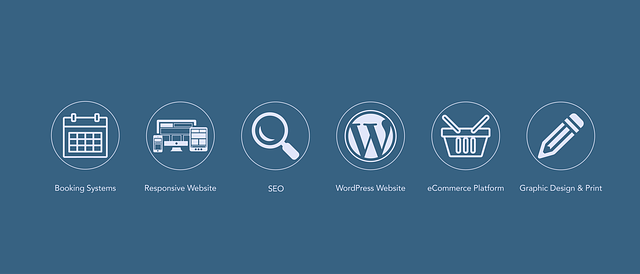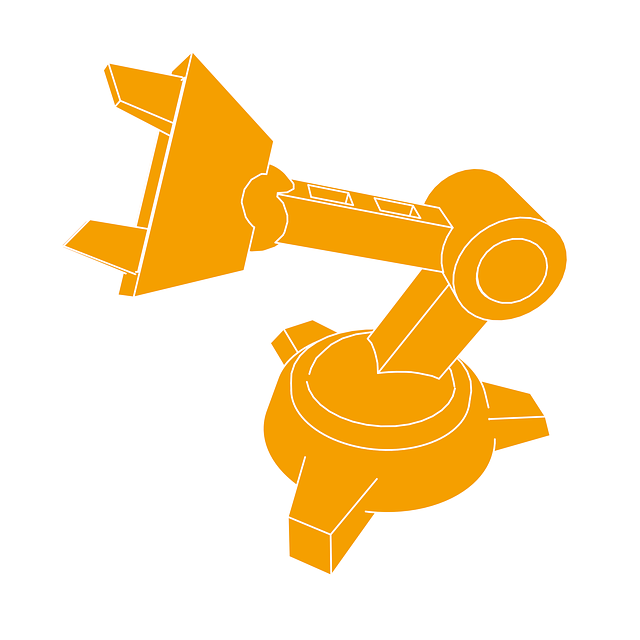Internal linking automation for WordPress is a powerful strategy to boost SEO by creating an efficient network of links within website content, enhancing navigation, optimizing link distribution, and improving crawlability. Advanced algorithms in tools like LinkAI and SEMrust analyze content to suggest strategic link placements, saving time and promoting better website architecture. These plugins streamline the process, making it easier for search engines to understand and rank pages effectively, driving traffic and improving rankings for WordPress sites. Measuring success through analytics provided by these plugins helps identify high-performing pages and areas for improvement, ultimately enhancing user experience.
Internal linking is a powerful SEO strategy that can enhance your website’s performance. In this guide, we explore how internal linking automation for WordPress can revolutionize content planning and optimization. We’ll delve into the fundamentals of effective internal linking, highlighting its role in boosting search rankings. You’ll discover top plugins to streamline the process, learn best practices for a healthy link profile, and understand the importance of automated strategies for efficient website management.
- Understanding Internal Linking: The Foundation of Effective SEO
- Why Automation is Key for WordPress Websites
- Top WordPress Plugins for Streamlining Internal Linking
- Integrating Link Building Strategies with Content Planning
- Measuring Success: Tracking and Analyzing Internal Link Performance
- Best Practices for Maintaining a Healthy Internal Link Profile
Understanding Internal Linking: The Foundation of Effective SEO

Internal linking is a fundamental aspect of search engine optimization (SEO) that often gets overlooked but carries immense significance. It involves creating a network of links within your website’s content, ensuring a seamless navigation experience for users and search engines alike. By implementing an effective internal linking automation strategy for WordPress, you can significantly enhance your site’s SEO performance. This strategy focuses on optimizing the way pages are interconnected, enabling better distribution of link equity and improving crawlability.
An internal linking automation tool can be a game-changer for content creators and marketers. It streamlines the process by automatically suggesting relevant links within your articles, saving time and effort. These plugins utilize advanced algorithms to analyze your content and propose strategic placements for internal links, thereby promoting better internal linking automation optimization. With such tools, you can ensure that your website’s architecture is logical and hierarchical, making it easier for search engines to understand the context and importance of each page.
Why Automation is Key for WordPress Websites

In today’s digital era, where content is king, WordPress websites are a powerhouse for online businesses. However, to truly reign supreme, these sites require a robust internal linking strategy. This is where automation steps in as a game-changer. By implementing automated internal linking solutions, WordPress site owners can optimize their content distribution and enhance user engagement.
Automation offers a strategic approach to creating an internal linking automation strategy. It allows for efficient navigation through a website’s vast network of pages, ensuring relevant and contextual links are placed with precision. This process, often facilitated by plugins, enables website administrators to save time and effort while reaping the benefits of improved SEO. An internal linking automation tutorial might reveal valuable insights into optimizing these tools for maximum efficiency, ultimately driving traffic and boosting search engine rankings.
Top WordPress Plugins for Streamlining Internal Linking

In the quest for efficient internal linking automation for WordPress sites, several powerful plugins stand out. These tools are designed to simplify the process of creating and managing links within your content, thereby enhancing SEO efforts. One popular choice is LinkAI, which utilizes machine learning algorithms to automatically suggest relevant links in your posts, saving time and ensuring high-quality internal linking. Another notable mention is SEMrust, offering a comprehensive solution for optimizing your site’s structure through advanced internal linking features.
For those seeking an internal linking automation tutorial, these plugins provide step-by-step guides and user-friendly interfaces. They allow you to focus on creating valuable content while they handle the technical aspects of internal linking optimization. By implementing these strategies, WordPress users can achieve better internal linking automation SEO performance, making their sites more crawlable and improving user engagement.
Integrating Link Building Strategies with Content Planning

In the realm of affiliate SEO blogs, content planning and link building go hand in hand. Integrating effective internal linking strategies into your content strategy is a game-changer for optimizing your WordPress site. By utilizing tools that offer internal linking automation for WordPress, you can streamline this process with ease. These plugins are not just time-savers but also enhance the overall SEO performance by ensuring relevant and contextual links within your articles.
For instance, an internal linking automation tutorial or strategy guide can equip content creators with the knowledge to strategically place backlinks to relevant posts, fostering a web of interconnected content. This optimization technique allows search engines to crawl and index your site more efficiently, ultimately improving user experience. So, whether you’re new to the game or looking to refine your approach, integrating internal linking automation into your WordPress workflow is a surefire way to elevate your content’s visibility and authority.
Measuring Success: Tracking and Analyzing Internal Link Performance

Measuring success is a crucial aspect of any SEO strategy, and when it comes to internal linking, tracking and analyzing link performance can provide valuable insights. With WordPress, there are tools designed to help with internal linking automation, offering efficient ways to monitor and optimize your site’s structure. These plugins often come equipped with analytics features that allow you to gauge the effectiveness of your internal links.
By utilizing these tools, you can gain a deeper understanding of user behavior on your website. For instance, an internal linking automation tutorial might guide you on how to set up tracking for link clicks, page views, and bounce rates associated with specific internal links. This data is essential for identifying high-performing pages and those that need improvement, allowing for informed decisions in your internal linking automation optimization process. Additionally, these analytics can help uncover potential issues like broken links or underperforming content, ensuring a seamless user experience.
Best Practices for Maintaining a Healthy Internal Link Profile

Maintaining a healthy internal link profile is crucial for any WordPress website aiming to excel in search engine rankings. One of the best practices involves utilizing internal linking automation tools, which streamline the process and ensure optimal optimization. These plugins suggest relevant links within your content, promoting a strategic internal linking structure. By integrating such tools, you can efficiently create a web of interconnected pages that enhance user experience while boosting SEO efforts.
Additionally, focus on creating a natural link flow between pages. Avoid excessive linking to a few pages and instead distribute links evenly across your site’s content. Regularly review and update your internal links to maintain their relevance and effectiveness. This ongoing process ensures your website remains dynamic and provides value to both users and search engines, ultimately contributing to improved SEO performance through effective internal linking automation tips.
